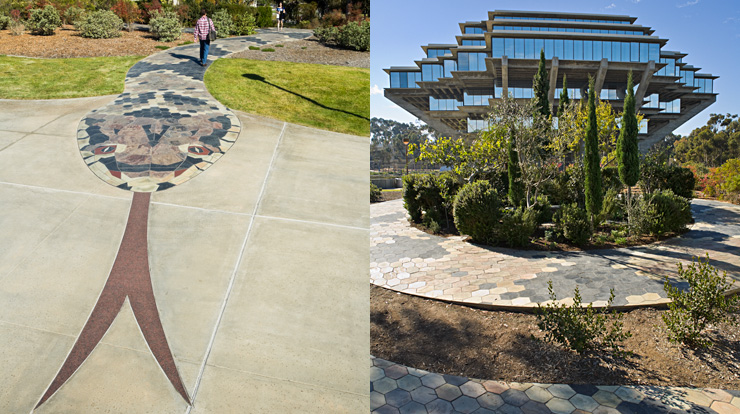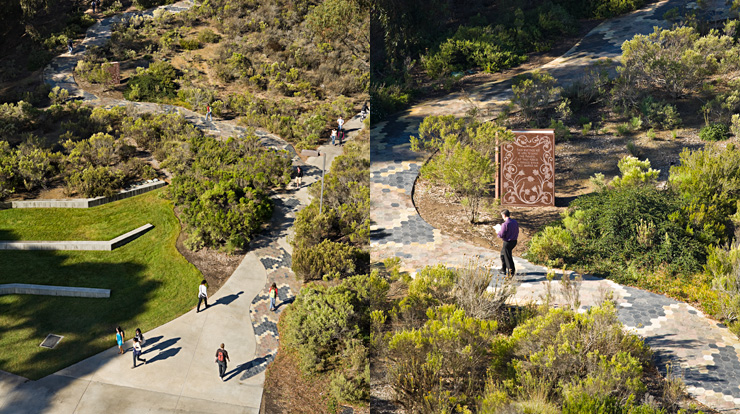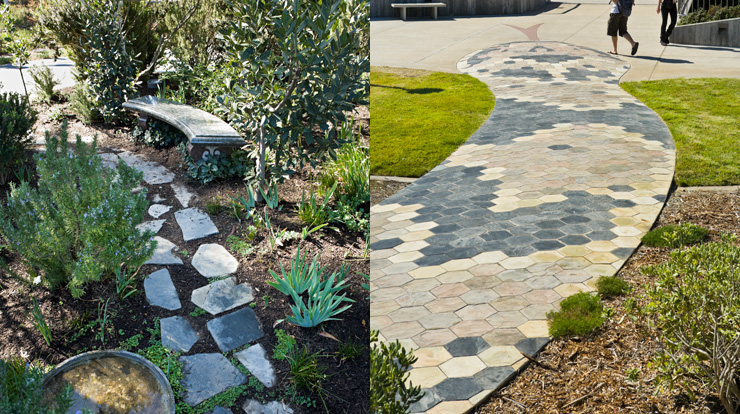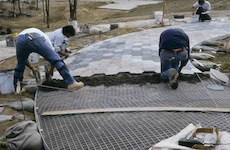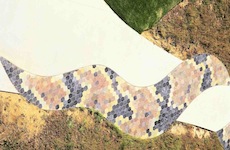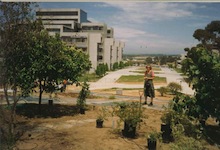Alexis Smith
Snake Path (1992)
Since the 1970's, Alexis Smith has been known for innovative collages in unique or exotic frames, which pair found objects with backgrounds such as maps, vintage magazine covers, and amateur paintings. Smith combines fragments from the mass media like magazine covers or dust jackets of the 1940s with a wide range of kitsch and found objects. Often she has organized several collages into sequences, implying a coherent narrative. As in a film, related fragments of text (almost a "soundtrack") link one collage to another. Smith has also painted large motifs directly onto a gallery's walls and then hung her smaller framed works on this mural-like background. In this way she succeeds in transforming the art space itself into a collage. In recent years Smith has expanded this impulse to work environmentally, doing many large-scale permanent installations including terrazzo floors for the Los Angeles Convention Center and the Schottenstein Sports Arena at Ohio State University in Columbus.
Smith's work for the Stuart Collection, Snake Path, consists of a winding 560-foot-long, 10-foot-wide footpath in the form of a serpent, whose individual scales are hexagonal pieces of colored slate, and whose head is inlaid in the approach to the Geisel Library. The tail wraps around an existing concrete pathway as a snake would wrap itself around a tree limb. Along the way, the serpent's slightly crowned body circles around a small "garden of Eden" with several fruit trees including an apple, a fig and a pomegranate. There is a marble bench with a quote from Thomas Gray: "Yet ah why should they know their fate/When sorrow never comes too late/And happiness too swiftly flies/Thought would destroy their Paradise/No more, where ignorance is bliss, tis folly to be wise." The path then passes a monumental granite book carved with a quote from Milton's Paradise Lost. "And wilt thou not be loathe to leave this Paradise, but shalt possess a Paradise within thee, happier far."
These pointed allusions to the biblical conflict between innocence and knowledge mark an apt symbolic path to the University's main repository of books. The concept of finding sanctuary within oneself - outside the idealistic and protected confines of the university - speaks directly to the student on the verge of entering the "real world."
Smith lives and works in Los Angeles. Her work makes a major contribution to the recent and widespread artistic effort to articulate and reevaluate the ideological formations of mass culture, and, as the Snake Path dramatizes, the collection and production of so-called classical knowledge.
